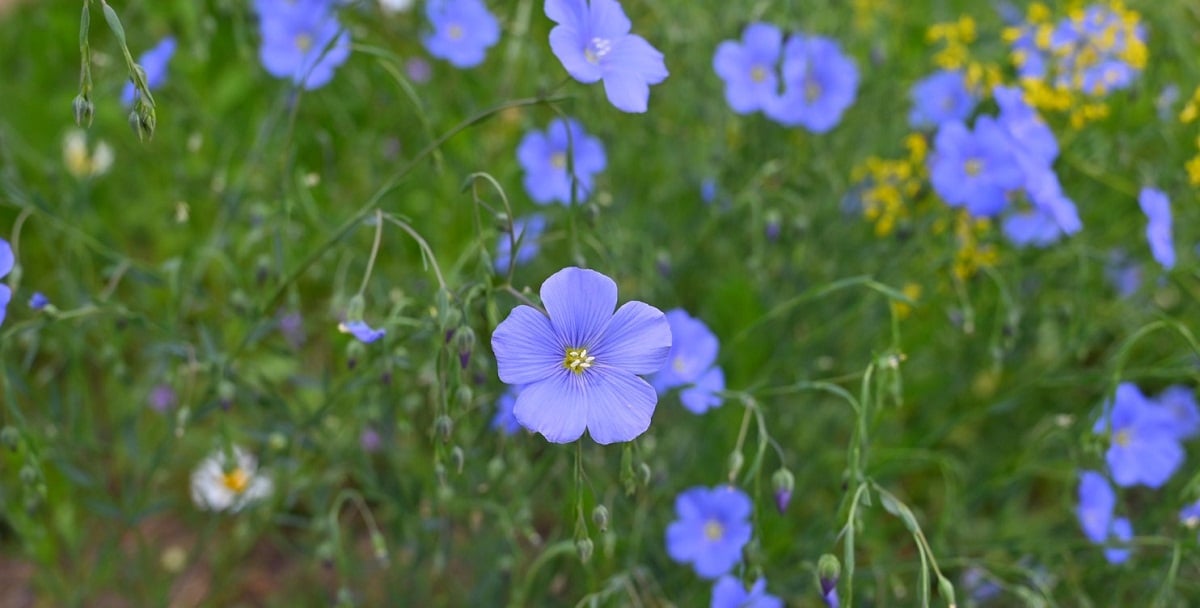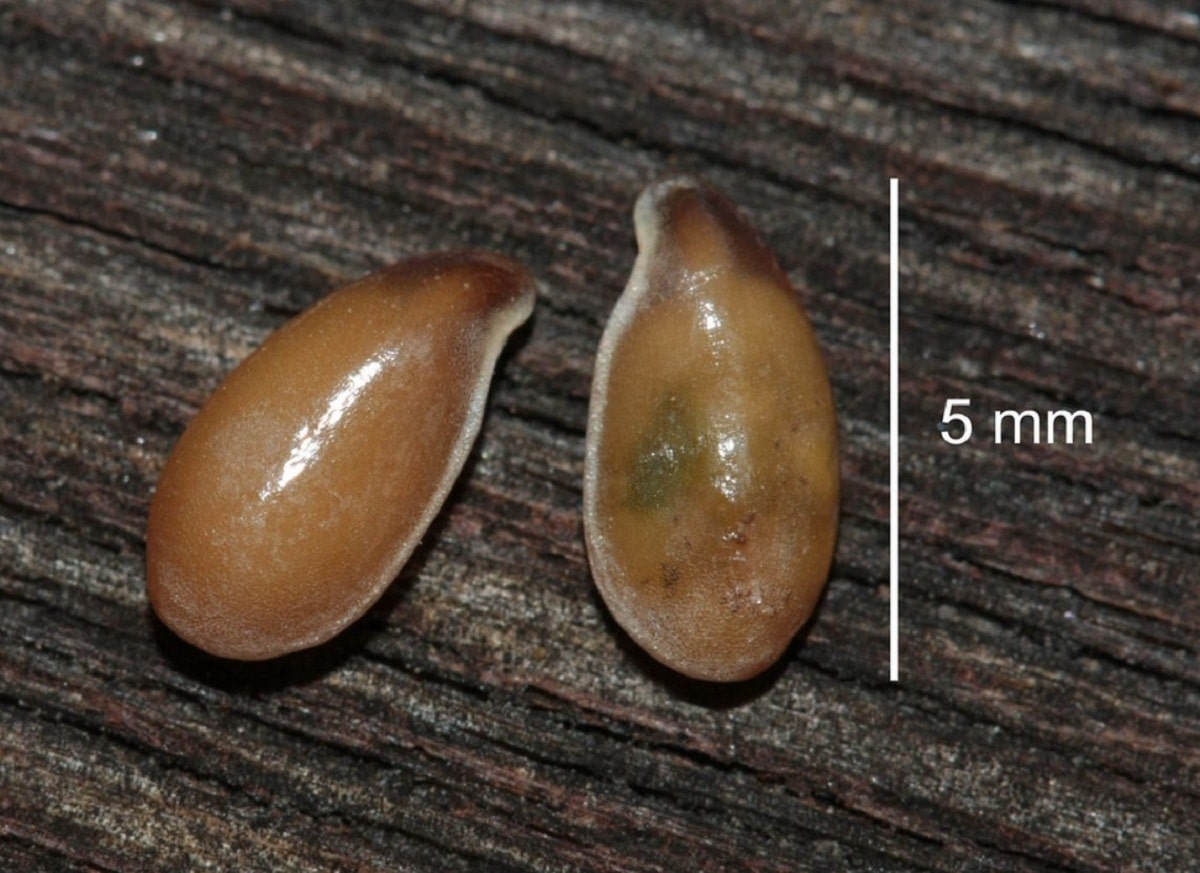
To the plant Linum usitatissimum It happens the same as many species whose name is difficult to pronounce or remember, surely this will be a fairly well-known species. Today we will be talking about her.
So in this article you will know some general data, characteristics of the plant, as well as some relevant data for its cultivation and care. In the end it will depend on you if you want to have this species or not in your garden or if you want to grow it for your own use.
General data

La Linum usitatissimum or as it is commonly known, Liaza or flax, is a plant whose growth and development occurs mainly in rural-type environments. Its growth is thanks to the fact that its seeds fall accidentally and since they are very light, the wind moves them and thus they spread.
Flaxseed is known worldwide mainly for its seeds, since a lot of uses and benefits for human consumption emerge from them. To this day, the origin from which this plant comes is unknown.
But due to the morphology and the characteristics that promote its growth, it is believed to have a wild origin. Some authors and web pages suggest that the origin of this species resides in Europe and part of the East.
And if that is the case, this is not at all strange that it is true, since Europe is where it is mostly grown. Although its cultivation has been in decline since it is not being done with the same intensity as some years ago.
The most common places to see flaxseed They are areas of the type of embankments and slopes that are very close to crops. Although they are also very seen on the sides of abandoned roads.
Despite being a very useful plant with many uses, the life of this species is not very long like other herbs. Now, it is time to move on to the most outstanding characteristics of Flaxseed.
Features Linum usitatissimum
There is a lot of information to discuss regarding the characteristics of the plant, but we will do it in a direct and summarized way, so that you have the most important at your fingertips. It should be noted that the size of this plant is very small and in ideal conditions, they can exceed one meter in height.
Leaves
The color of the leaves and as it happens in the vast majority of plants is green, although this particular species has a bluish hue on its leaves. It reaches a maximum length of 4 cm and they are very sensitive since they are very thin. In the same sense, the leaves are alternated and have a pointed shape.
Flowers
It has very thin pedicels that they measure only 2.5 cm long. Each flower has 5 sepals that are mostly pointed. As for the flower petals, they can turn white in some cases, but they are usually blue.
Fruit and seed

The fruits and especially the seeds are those that are used to give it medicinal and nutritional uses in some cases. The fruit is wrapped in a balloon-shaped capsule and in some cases it is usually wide and other times long. Typically, each capsule contains 10 seeds.
Cultivation and care
The good news for those who want to grow flax is that it is a plant that can be grown in all types of climates and environmentss. Just as it can be grown in Argentina, or Uruguay, it can also be grown in Egypt, Russia, Spain and others.
The main thing to consider when growing flax is the type of soil. This must have clayey and siliceous characteristics. The humidity level of the soil does not have to be too high, just enough so that it can be tilled and prepared for cultivation.
A relevant and very important fact to remember is that the lower layer where it will be planted, has to be permeable for as long as possible. In other words, keep the terrain as optimal as possible in order to avoid too much humidity or drought in the terrain.
Uses
You would be surprised how many uses flaxseed can be put to.. What's more, it would take a full article talking about each of its benefits and uses. But for this case, we will only focus on some of the best known and that may be useful depending on your situation.
With flax seeds you can prepare a very simple and practical poultice, which is useful to treat rashes that appear on the skin. To do this, you have to mix the flaxseed flour with a little boiled water. This preparation has to be such that a kind of paste is created which will be used to apply in the area where the eruption is.
You can take the seed directly from the plant and crush it, for later add a little water to create a kind of paste. But in this case, the paste has to be liquid, so that it can be taken with water at least three times a day. This will help with constipation in no time.

Whether you have a constant dry cough that caused a sore throat or any other problem that caused it, flaxseed again works its magic and is effective for this problem.
The way to prepare and use flaxseeds is take a tablespoon of its seeds and add them to a glass of cold water. You should let it rest there for at least two hours and then you can gargle with the water. Of course, before doing so, try to heat the water and then filter it.
These are not the only uses for flaxseed. There are a large number of other types of uses, such as:
- You can prepare an ointment based on linseed oil.
- The paste that is created after crushing the seeds is used for skin problemsWhether it is rashes, abscesses and ulcers.
- It serves as natural treatment for stomach and digestive problems in animals, such as dogs and cats.
- Effective against fungi and bacteria.
- Helps relieve back pain and joint pain.
- Controls high cholesterol and is able to release blockages in the arteries.
As you can see, it is an extremely effective plant for multiple problems and conditions, although it must be said that this is not all. We have fallen short, but at least it serves to give you a slight idea of how beneficial this plant is.